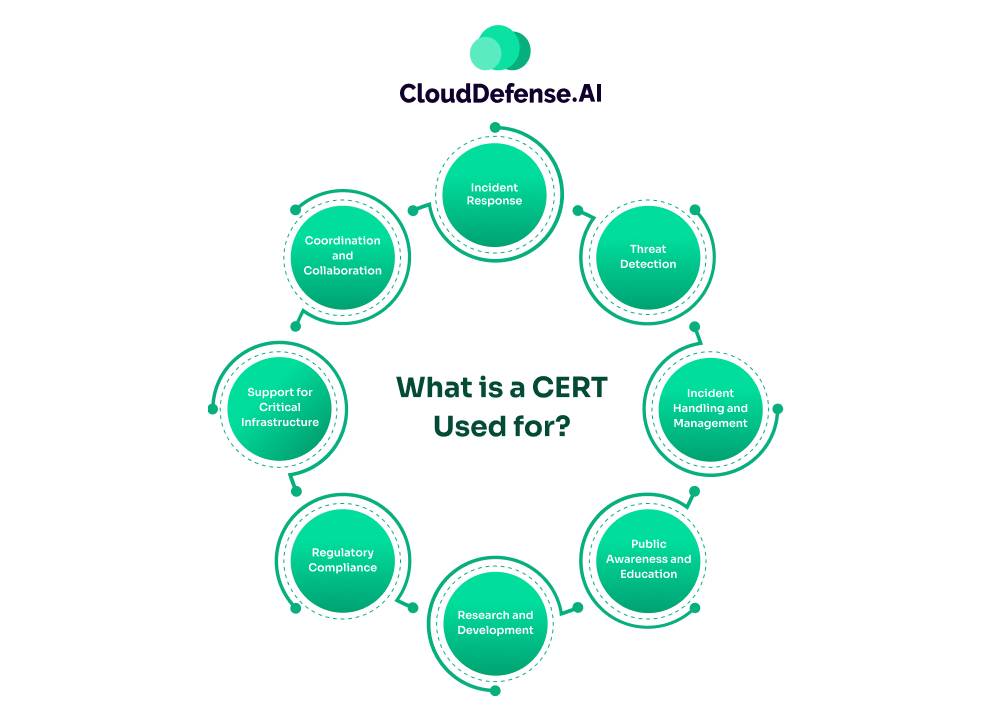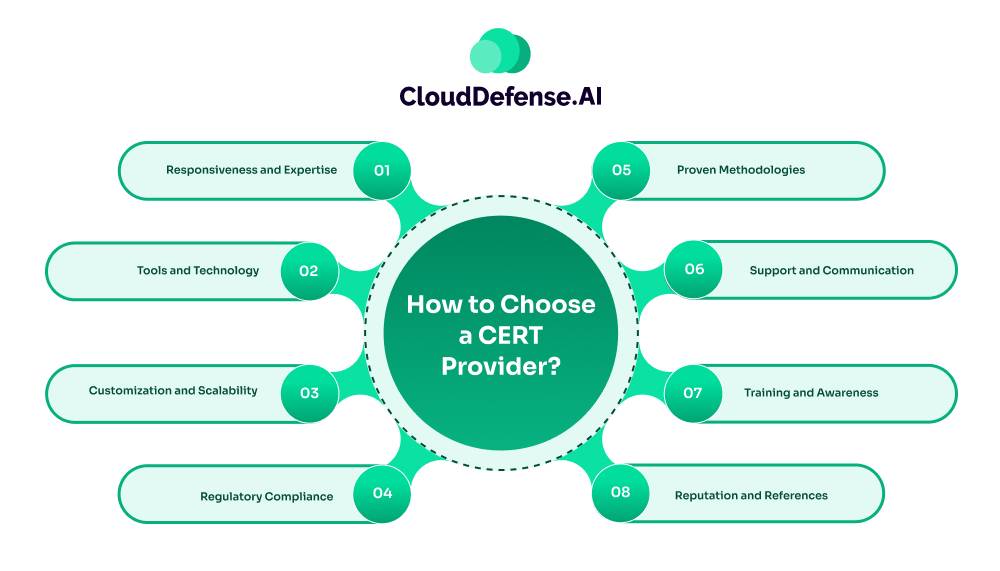What is a CERT?
A Computer Emergency Response Team, or CERT, is a specialized group of information security experts tasked with protecting an organization against, detecting, and responding to cybersecurity incidents. CERTs are the first responders to cyberattacks, such as data breaches and denial-of-service attacks, and they provide critical support to businesses, critical infrastructure, and government agencies.
They offer incident handling guidelines, issue alerts, and conduct public awareness campaigns to enhance cybersecurity. While large organizations like banks may have their own CERTs, many companies rely on commercial CERT services for their cybersecurity needs. CERTs also engage in research to continuously improve security systems, ensuring strong protection against emerging threats.
What is a CERT Used for?

A Computer Emergency Response Team (CERT) serves several critical functions in cybersecurity:
1. Incident Response
CERTs are the first responders to cybersecurity incidents, such as data breaches, malware attacks, and denial-of-service attacks. They quickly assess the situation, contain the threat, and mitigate damage.
2. Threat Detection:
CERTs monitor networks and systems for signs of suspicious activity or potential security breaches, enabling early detection of threats.
3. Incident Handling and Management:
They provide guidelines and best practices for managing and resolving incidents, ensuring a systematic and effective response to various cybersecurity threats.
4. Public Awareness and Education:
CERTs conduct ongoing campaigns to educate the public and organizations about cybersecurity risks and how to protect against them.
5. Research and Development:
They engage in research to develop new security technologies and improve existing systems, staying ahead of emerging cyber threats.
6. Regulatory Compliance:
CERTs help organizations comply with cybersecurity regulations and standards by providing expertise and support in implementing necessary measures.
7. Support for Critical Infrastructure:
They provide specialized support to critical infrastructure sectors, ensuring the security and resilience of essential services.
8. Coordination and Collaboration:
CERTs often work with other cybersecurity organizations, law enforcement, and government agencies to coordinate responses to large-scale incidents and share information on emerging threats.
How does a CERT Work?
When an intrusion is suspected, the CERT team is activated to assess the situation. They evaluate available tools, identify signs of compromise, gather attack indicators, define the perimeter to be defended, and consider potential impacts. The team collaborates closely with the information systems department and the Security Operations Center (SOC) to optimize the use of available security resources.
During a cybersecurity crisis, CERTs may recommend or deploy specific tools to ensure effective monitoring and response, especially if the organization’s own security measures are compromised. Their goal is to contain the threat, mitigate damage, and restore normal operations as swiftly as possible.
Post Crisis
Post-crisis, the CERT provides valuable recommendations to enhance the security architecture and prevent future incidents. This may involve suggesting improvements in risk management, such as acquiring vulnerability monitoring tools or threat intelligence services like those offered by CloudDefense.AI. These measures help organizations stay informed about emerging threats and maintain a proactive security posture.
By using their expertise and resources, CERTs play an essential role in both immediate incident response and long-term cybersecurity improvement, ensuring that organizations are well-prepared to handle and prevent cyber threats.
How to Choose a CERT Provider?

Here are key considerations to guide your decision when choosing a CERT provider.
1. Responsiveness and Expertise
A CERT provider must demonstrate exceptional responsiveness and expertise. The team’s ability to react effectively from the onset of an incident is vital. Look for providers with a proven track record and skilled professionals who possess extensive experience in incident response.
2. Tools and Technology
Effective incident response relies on fluid, easy-to-access tools designed for cybersecurity professionals. Evaluate the technological capabilities of the CERT provider, ensuring they use advanced platforms and tools that enhance the team’s efficiency.
Opt for providers that integrate state-of-the-art incident response solutions, such as those offered by CloudDefense.AI, which provide comprehensive threat intelligence and monitoring capabilities.
3. Customization and Scalability
The CERT provider should offer solutions that can be tailored to your organization’s specific needs. Ensure they provide scalable services that can grow with your business and adapt to evolving cybersecurity challenges.
4. Regulatory Compliance
Ensure the CERT provider complies with relevant industry regulations and standards. Their services should help your organization meet legal and regulatory requirements, providing peace of mind regarding compliance issues.
5. Proven Methodologies
Look for a CERT provider with established and proven incident response methodologies. Their approach should be based on best practices and refined through years of experience in handling diverse cybersecurity incidents.
6. Support and Communication
Effective communication and ongoing support are essential. Choose a provider that offers clear communication channels and continuous support to address your cybersecurity concerns and provide timely updates during an incident.
7. Training and Awareness
A good CERT provider should also offer training and awareness programs to enhance your organization’s cybersecurity posture. This includes educating employees on best practices and preparing them to recognize and respond to potential threats.
8. Reputation and References
Research the reputation of the CERT provider and seek references from other organizations that have used their services. Positive testimonials and case studies can provide valuable insights into the provider’s effectiveness and reliability.
History of CERT
The history of the CERT dates back to 1988, following the first major internet security incident, the Morris Worm, which disrupted a significant portion of the ARPANET. In response, the Defense Advanced Research Projects Agency (DARPA) funded the establishment of the first CERT at the Software Engineering Institute (SEI) at Carnegie Mellon University.
This pioneering team was tasked with addressing cybersecurity threats, providing rapid response to security incidents, and developing preventive measures. Since then, the CERT concept has spread globally, with numerous organizations and governments establishing their own teams to enhance their cybersecurity defenses and incident response capabilities.
Final Words
Understanding the history, functions, and selection criteria of a Computer Emergency Response Team is important for any organization aiming to strengthen its cybersecurity defenses.
By choosing the right CERT provider, organizations can ensure prompt and effective incident response, the best protection against cyber threats, and ongoing compliance with industry regulations.
Consider partnering with services like CloudDefense.AI to use advanced threat intelligence and vulnerability monitoring. Book a free demo now to experience the future of cloud security!







